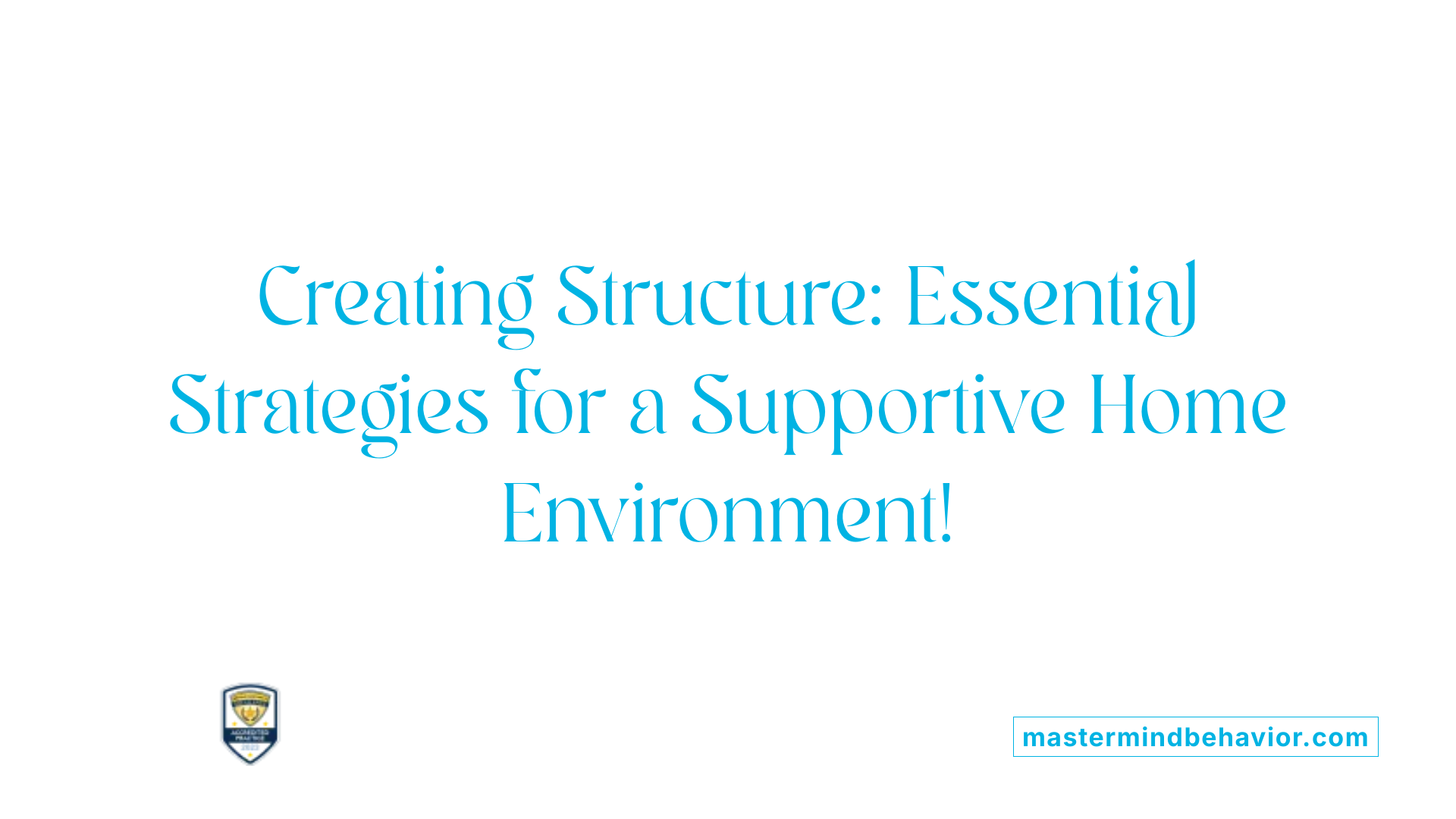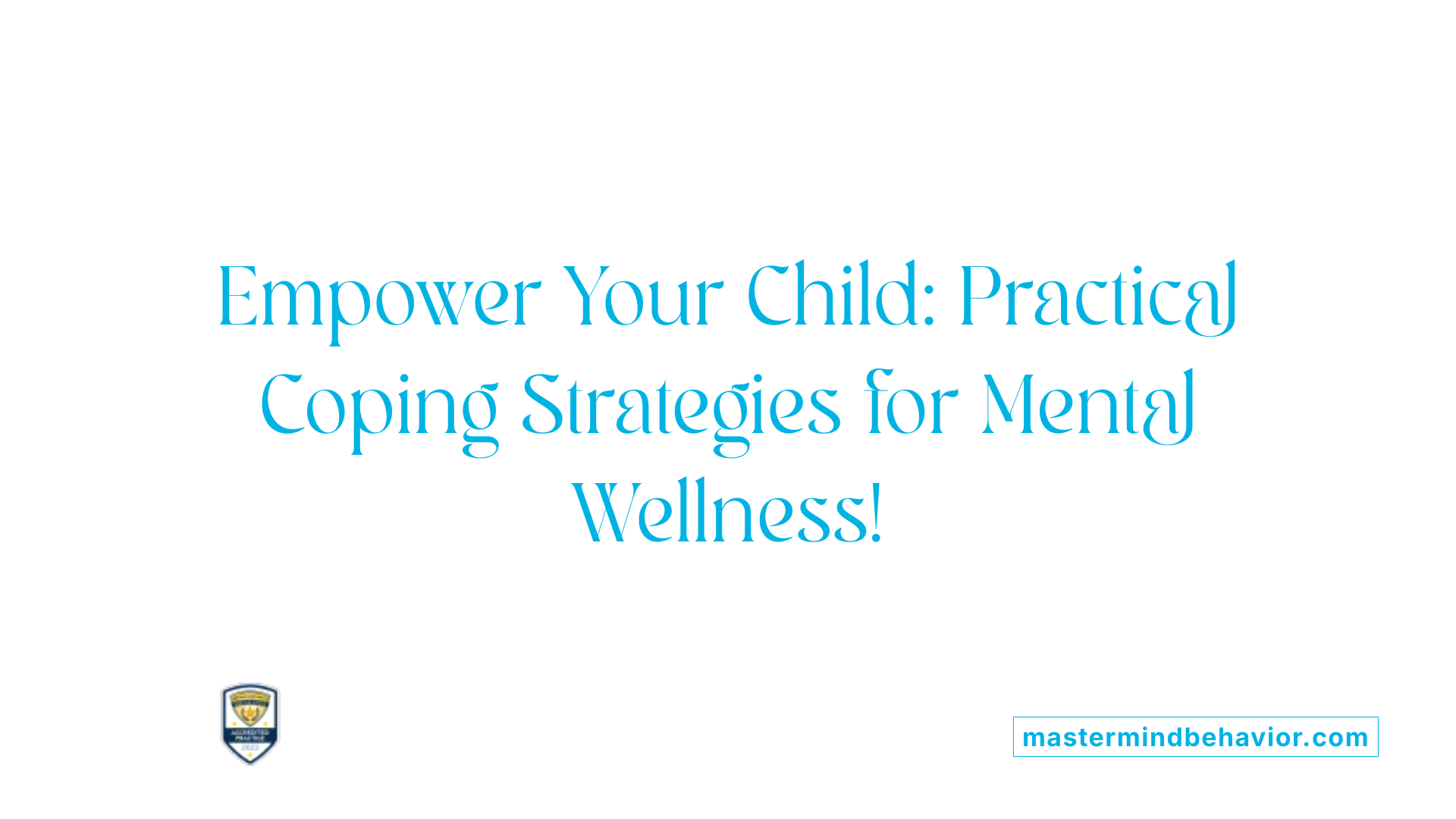How to Build a Supportive Environment for Your Child’s Therapy

Introduction
As a parent, your role in your child’s therapy journey is incredibly important. Creating a supportive environment can significantly enhance your child’s progress in therapy. From establishing daily routines to actively participating in therapy exercises, the supportive actions you take at home can help foster emotional growth and resilience. This article will explore practical strategies for building a nurturing environment, effectively engaging in your child's therapy, and understanding the delicate balance between supportive involvement and allowing independence.
Fostering Open Communication and Emotional Support

How can parents support their child's mental health at home?
Parents can create a nurturing environment that emphasizes open communication and emotional support. Here are several effective approaches:
- Encourage Expression: Create a safe space where children feel comfortable sharing their thoughts and feelings without fear of criticism. Validate their emotions, even if you don't fully understand their perspective.
- Model Healthy Behaviors: Children learn best by observing. Demonstrate healthy emotional expressions by sharing your feelings and coping mechanisms. Show them how to discuss emotions constructively and manage stress through relaxation techniques.
- Establish Routines: Consistency provides children with a sense of security. Set daily schedules for meals, homework, and leisure, reinforcing the predictability and stability they need for emotional development.
- Active Listening: Listen without interrupting, fostering an environment where children feel heard and valued. Respond to their concerns gently, helping them feel understood.
- Creative Play and Activities: Encourage engagement in creative activities and physical play. These outlets not only promote self-expression but also enhance emotional well-being.
- Be Patient: Recognize that emotional growth takes time. Practice patience and offer unconditional support as your child navigates their feelings.
In sum, fostering open dialogue and providing emotional support not only nurtures resilience but also enhances the overall mental health of your child.
Creating a Structured and Nurturing Environment

What are effective strategies to create a supportive environment for children in general?
Creating a nurturing and structured environment for children is vital for their emotional and developmental well-being. Here are several strategies that parents and caregivers can adopt:
Implement Daily Routines
Establishing a consistent daily schedule helps children feel secure and understand what is expected of them. This predictability can significantly reduce anxiety and help them manage their time effectively. Examples include dedicated times for meals, homework, and play.Structure the Home Environment
A well-organized home space that minimizes chaos fosters concentration and encourages independence. Designate specific areas for study, relaxation, and creative play. This separation allows children to understand where to engage in different activities, promoting focus.Encourage Age-Appropriate Responsibilities
Assigning age-appropriate chores helps build a child's confidence and sense of responsibility. Simple tasks like making the bed or sorting laundry can contribute to their independence, while also teaching valuable life skills.Create Safe Spaces for Expression
Establish a calm, welcoming environment at home where children can freely express their feelings. Incorporate comfort items like blankets or calming colors to help children feel secure. This can encourage emotional expression without fear of judgment.
By integrating these practices, parents can create an optimal environment for their children to thrive emotionally and academically.
Structured Support for Children with ADHD

How can parents create a nurturing and supportive environment for children with ADHD?
To create a nurturing and supportive environment for children with ADHD, parents should start by establishing a well-organized home. Consistent daily routines help reduce distractions and provide essential structure. Here are some strategies:
Establish a Routine: A predictable schedule encompasses tasks like homework, playtime, and meals to create stability.
Designated Activity Spaces: Set up specific areas for activities like homework or crafts. Clear physical boundaries can help minimize distraction and focus energy on tasks.
Utilize Visual Aids: Tools like labels, charts, or schedules reinforce expectations and assist children in managing their responsibilities effectively. Useful visual aids can include:
| Type of Visual Aid | Purpose | Example |
|------------------------|----------------------------|----------------------|
| Labels | Identify designated areas | "Toys" label on bins|
| Charts | Track tasks or behavior | Reward chart |
| Schedules | Outline daily activities | Daily routine poster |Encourage Physical Activity: Regular breaks for movement can help reduce hyperactivity and allow for better focus on tasks.
Open Communication: Emphasizing a non-judgmental atmosphere allows children to feel safe discussing their feelings and challenges.
Collaborative strategies with educators
Furthermore, collaborating with teachers and healthcare providers can implement appropriate educational strategies and accommodations in the classroom. This way, the child’s support extends beyond home, enhancing their overall development and well-being.
Enhancing Therapy Through Active Parental Involvement

How can parents actively participate in their child's therapy journey at home?
Parents are pivotal in their child’s therapy journey, and their involvement can greatly enhance the effectiveness of the therapeutic process. One of the most vital steps is maintaining open communication with therapists. This involves sharing observations about their child's behavior, asking questions about therapies, and understanding the goals set during sessions.
Regular interaction with therapists provides insights that can help tailor home practices to the child's identified needs. Parents should confidently ask about techniques and coping strategies gained from therapy, ensuring they can practice these skills in daily life. For instance, employing relaxation techniques, like deep breathing or mindfulness exercises, during family time can reinforce what the child learns in therapy.
Moreover, emotional support from parents plays a crucial role. Validating feelings, encouraging discussions about therapy, and celebrating small wins can motivate children and create a nurturing home environment. Celebrating achievements fosters a child’s self-esteem and encourages ongoing engagement with the therapeutic process.
Additionally, staying informed is essential. Parents can engage in educational research about their child’s condition, which empowers them to make informed decisions and advocate more effectively for their child's needs. This investment not only builds a strong support network but also helps normalize discussions about mental health within the family. Together, these elements create a collaborative framework that significantly improves therapy outcomes.
Practical Coping Strategies for Children

What are some practical coping strategies for children dealing with mental health issues?
Children facing mental health challenges can utilize a variety of effective coping strategies to navigate their feelings and improve their emotional well-being. Here are some practical techniques that can be beneficial:
Self-Soothing Practices: Deep breathing exercises can calm anxiety. Children can count to five while inhaling and five while exhaling, which helps slow their thoughts and reduce tension.
Creative Outlets: Engaging in creative activities such as drawing, painting, or journaling allows children to express their emotions safely. These activities promote emotional awareness and can serve as therapeutic outlets.
Mindfulness Exercises: Teaching mindfulness practices, like guided imagery or body scans, can help children focus on the present moment, reducing overwhelming feelings and enhancing self-regulation.
Grounding Techniques: Children can use grounding techniques like the 5-4-3-2-1 method, where they identify five things they see, four things they can touch, three things they hear, two things they can smell, and one thing they can taste. This practice brings their attention back to their surroundings and alleviates anxiety.
Distraction Methods: Sometimes, simply redirecting attention can be a helpful coping mechanism. Encouraging children to listen to music, engage in play, or read can provide a necessary break from anxious thoughts.
Calm Down Kit: Helping children create a "calm down" kit filled with comforting items, like a favorite stuffed animal, fidget toys, or cozy blankets, allows them to access tools for emotional regulation during challenging moments.
Through these methods, children can develop healthier emotional responses, equipping them to handle life’s stresses with resilience.
Conclusion
Building a supportive environment for your child’s therapy isn’t just about physical comfort—it's about providing emotional support, fostering independence, and actively engaging in their therapeutic journey. By recognizing the unique needs of your child and working closely with therapists, you can help facilitate a healing and nurturing atmosphere at home that complements the progress made in therapy. With the right tools and a consistent approach, your home can become a sanctuary that nurtures growth and supports your child’s well-being.
References
- How Parents Can Support A Child in Therapy | Mindhues
- Parent Involvement: How to Support Your Child's Therapy at Home
- How to Create a Calm and Supportive Home Environment for your ...
- How to Support Your Child's Therapy: Tips and Strategies
- Helping Children: A Parent's Guide to Effective Counseling
- Creating a Supportive Home Environment for Pediatric Occupational ...
- Elevate Childhood: Cultivating Mental Health Safely
Recent articles

The Role of Functional Behavior Assessments in Identifying Triggers and Solutions
Unveiling the Mechanism Behind Effective Behavioral Strategies

How ABA Therapy Helps Build Confidence and Self-Esteem
Unleashing Potential: ABA Therapy's Role in Boosting Confidence

The Role of Data-Driven Decisions in ABA Therapy Success
Harnessing Data for Personalized ABA Therapy

Understanding Echolalia and Its Role in Autism Communication
Echolalia: A Window into Autism Communication

The Benefits of Group Therapy in Behavioral Programs
Unpacking Group Therapy's Role in Mental Health Interventions

The Importance of Patience and Consistency in ABA Therapy Programs
Exploring Patience and Consistency in ABA Therapy


